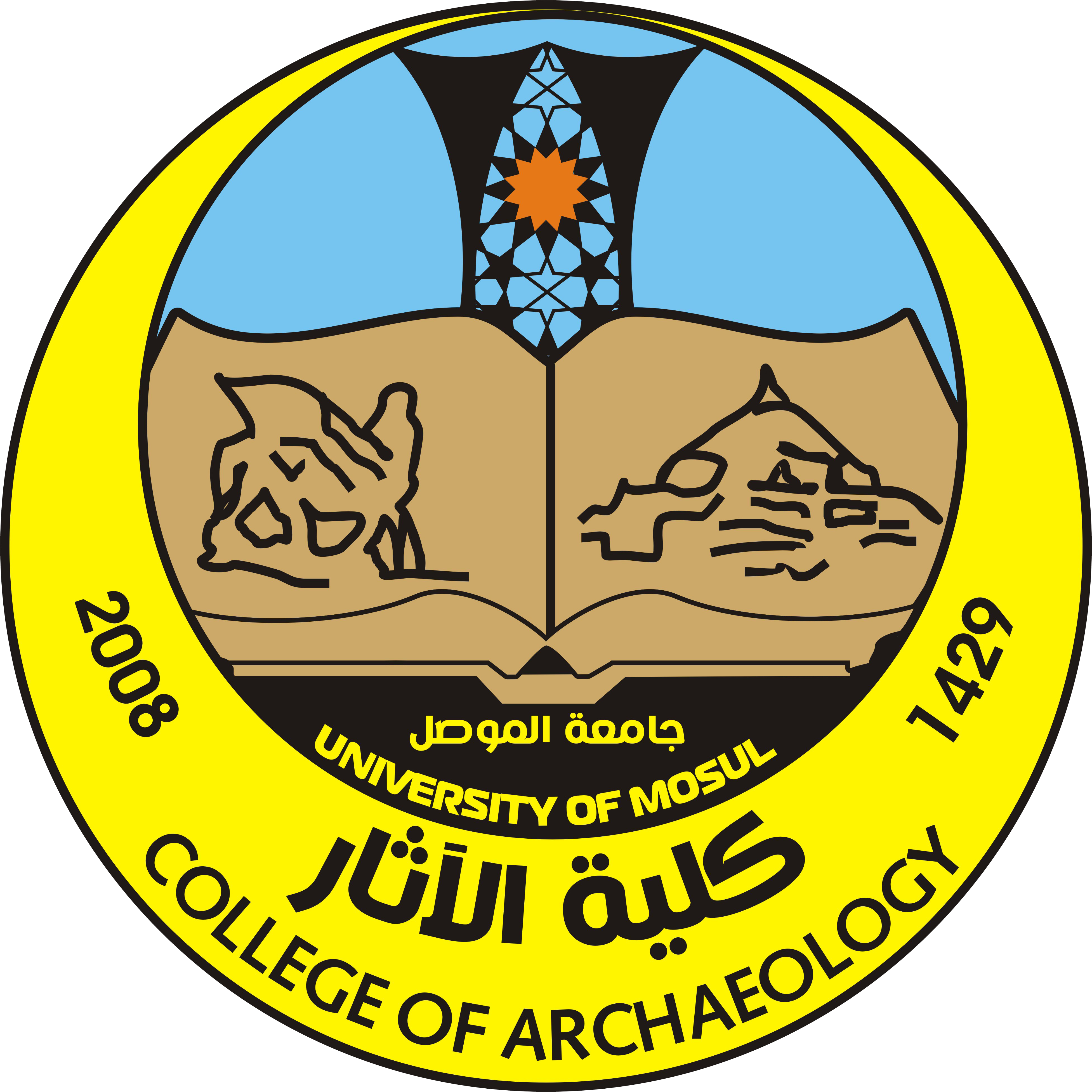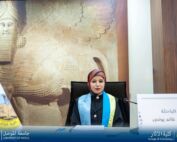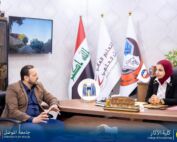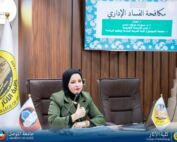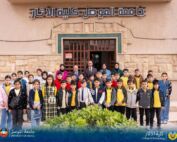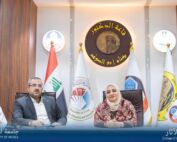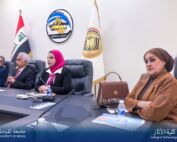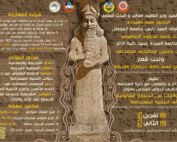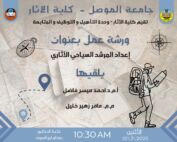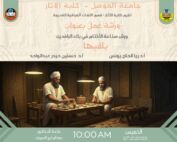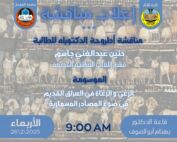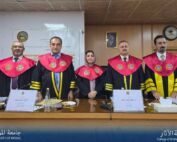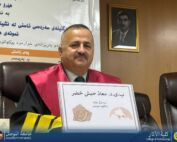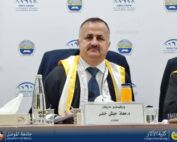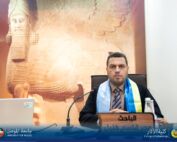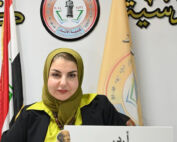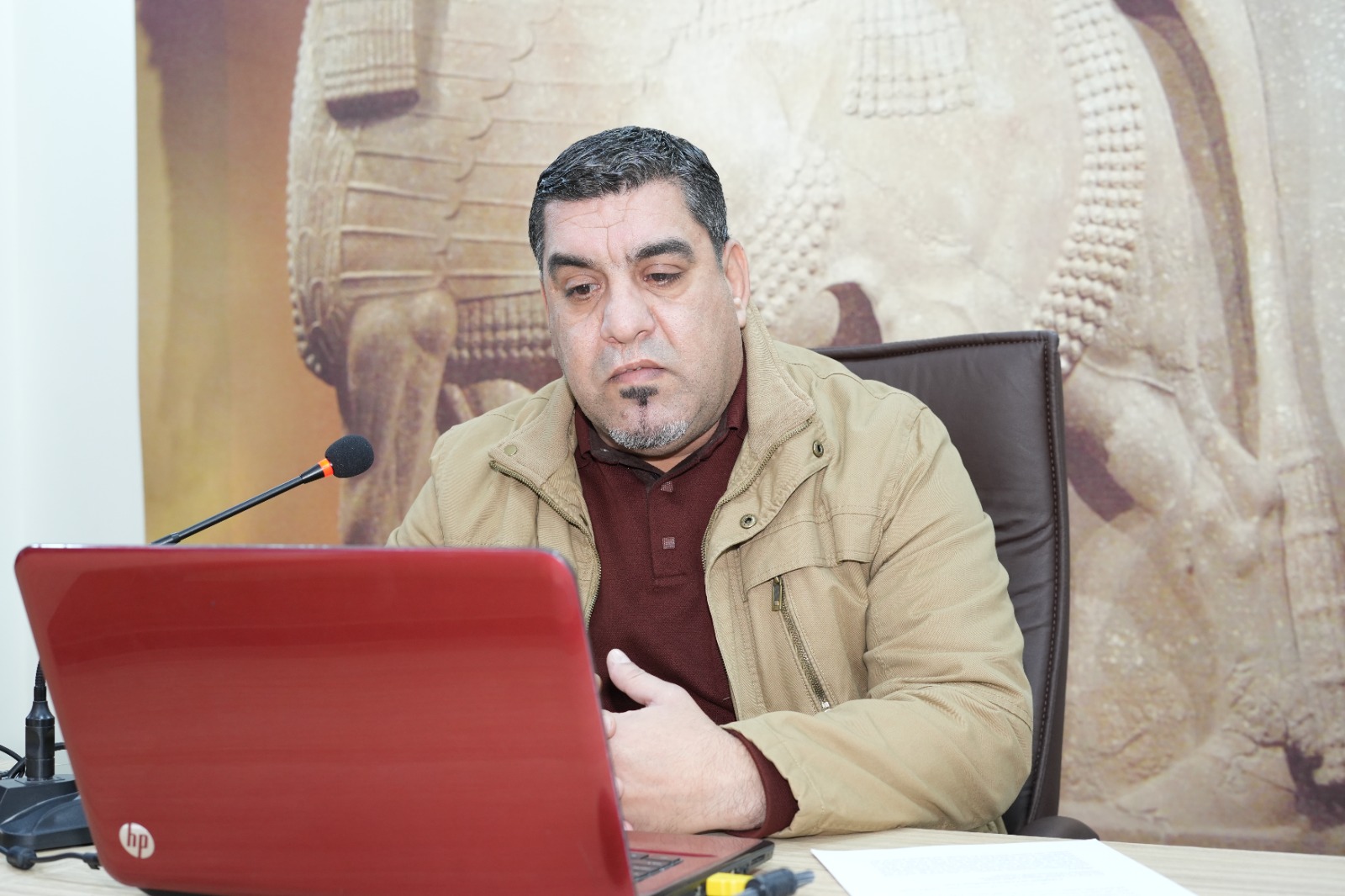23 March، 2023
Discussing a master’s thesis at the college of Archeology entitled “the shellfish shape in the buildings of Mosul” during the Ottoman era.

The College of Archaeology discussed the master’s thesis entitled (The shellfish shape in the buildings of Mosul during the Ottoman era – a comparative study with Egypt), on Thursday, March 23, 2023, in the hall of Bihnam Abu-Alsof. During the viva, the University’s President Assistant for scientific affairs and the Dean of the College of Archeology have attended part of the viva
The thesis presented by the student (Mahasin Ali Mahmoud) dealt with a study on the buildings in the city of Mosul and the Islamic cultural heritage in it that contains a beautiful decoration, which is the shellfish shape from the early ages of Islam up to the Ottoman era, and the most dominant era in which this decorative element was the Abbasid and Ottoman eras. It was shape was used on palaces found in the Umayyad al-Hur Palace, as it is the only model that was found and dates back to the Umayyad era, mosques, mosques, shrines, religious shrines, schools, and houses, including the house of Mustafa al-Tutanji and Ziyad al-Jalili, and churches. It was built from many materials, such as stone, marble, plaster, blue furnishings, and more. The decoration of the shell was carried out in most of the buildings on the original Musili marble.
The thesis also tackled the decoration of the shell shape in Egypt, as it prevailed in abundance in this great city and was executed in a beautiful artistic style, from the beginning of the Fatimid and Mamluk eras up to the Ottoman era.
The thesis reached the conclusions regarding the decoration of the shell shape in all buildings and the difference and similarities between them, which were carried out on those buildings in the city of Mosul and Egypt.
The discussion committee was chaired by Prof. Dr. Ahmed Qasim Al-Jumaa, and the membership of both Assistant Professor Dr. Aras Ismail Khader from Salahaddin University and Assistant Professor Dr. Haitham Qasim Muhammad, under the supervision and membership of Assistant Professor Dr. Muhammad Khader Mahmoud.



